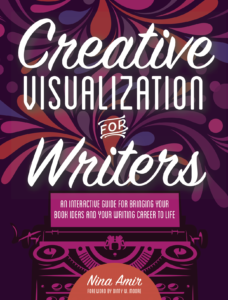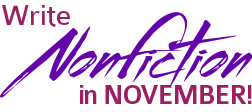Wednesday, October 12, 2016

Right brained. Left brained. As a nonfiction writer, does your success depend on upon what side of the brain you use most?
No.
Your ability to use both sides of your brain will make you more creative and productive.
Right Brain vs. Left Brain
It’s true. Your brain has two hemispheres, and each serves your creative endeavors differently.
The right side of your brain focuses on visual stimuli. It processes information in an intuitive and simultaneous way, seeing the entire picture first and then the details. The left brain focuses on verbal stimuli. It processes information analytically and sequentially, first seeing the pieces and then combining them to produce the whole. (See the image above, which was published in
Creative Visualization for Writers: An Interactive Guide for Bringing Your Book Ideas and Writing Career to Life, for more information on the functions of each side of the brain.)
You naturally use one side of the brain more than the other, but you can strengthen the less dominant side of your brain and benefit from those newfound capacities.
Harness all the talents your mind possesses.Click To Tweet
Take a Whole-Brain Approach to Writing
To increase your chance of success as a nonfiction writer, however, harness all the talents your mind possesses.
The two sides of your brain work together. And you can help them do so more often—and reap the benefits.
Novelists might rely on the right brain—the creative center—more often to craft realistic characters, vibrant settings, and engaging dialogue. Nonfiction writers might rely on their left brain—the language center—more often to analyze data, research topics, and present arguments and ideas clearly and concisely.

As I reported in
Creative Visualization for Writers, creativity studies in neuroscience suggest that the right-brain/left-brain distinction offers an incomplete picture of how the mind implements creativity. Your ability to create does not involve one side of the brain to the exclusion of the other.
“Numerous interacting conscious and unconscious cognitive processes, as well as emotions, get involved when you have an idea for an article, essay, blog post, or book and begin to write. Depending on where you are in the creative process and what you want to create, you might need to call on different regions of the brain for assistance,” I wrote.
That means you’ll experience heightened states of creativity and an increased ability to create or be productive when you actively engage both sides of the brain—when you write, draw, visualize, feel, and analyze. “A more whole-brain approach to your work helps you generate—and realize—ideas,” I concluded in
Creative Visualization for Writers.
How to Use Both Sides of Your Brain
Your ability to use both sides of your brain will make you more creative and productive.Click To Tweet
You can create all types of opportunities to take a whole-brain approach to your nonfiction writing projects. For instance, you can:
- Mind-map ideas—Mind mapping is both a logical and linear as well as a visual and creative task, thus, it uses both sides of the brain.
- Color or draw your ideas—Drawing or coloring takes your left brain idea and asks the right brain to depict it visually. You also can color—use an adult coloring book—as you think about your writing project; in the process, you use both sides of the brain.
- Visualize your project—Consciously daydreaming about your writing project employs the right brain to work on a left brain issue.
For more ways to develop a whole-brain approach to nonfiction writing, read
Creative Visualization for Writers. It contains over 100 interactive exercises to help you put your entire brain to use. As you do so, you strengthen both sides of your brain and increase your creativity and productivity.
Have you tried a whole-brain approach to writing? How has it affected your results?
It’s almost time for the Write Nonfiction in November (WNFIN) Challenge! To take the challenge and participate in National Nonfiction Writing Month (NaNonFiWriMo), click
here.
The post
A Whole-Brain Approach to Nonfiction Writing appeared first on
Write Nonfiction NOW!.
Nina Amir, the bestselling author of How to Blog a Book and The Author Training Manual, is a speaker, a blogger, and an author, book, blog-to-book, and high-performance coach. Known as the Inspiration to Creation Coach, she helps creative people combine their passion and purpose so they move from idea to inspired action and positively and meaningfully impact the world as writers, bloggers, authorpreneurs, and blogpreneurs. Some of Nina’s clients have sold 300,000+ copies of their books, landed deals with major publishing houses and created thriving businesses around their books. She is the founder of National Nonfiction Writing Month, National Book Blogging Month, and the Nonfiction Writers’ University. As a hybrid author she has published 15 books and had as many as four books on the Amazon Top 100 list at the same time.